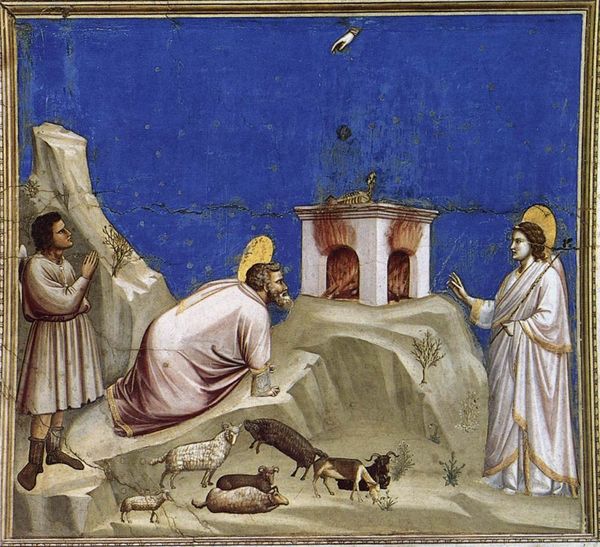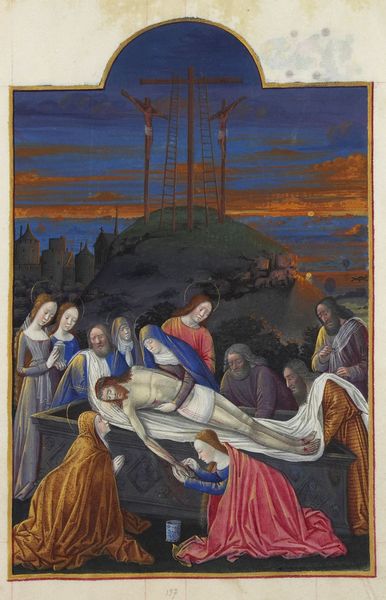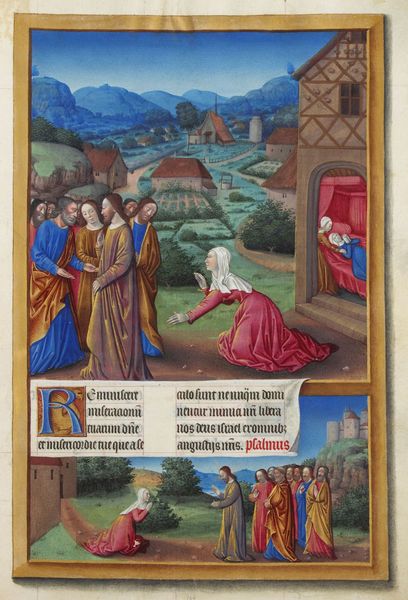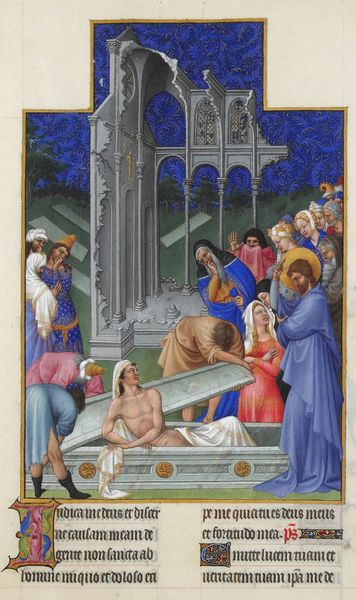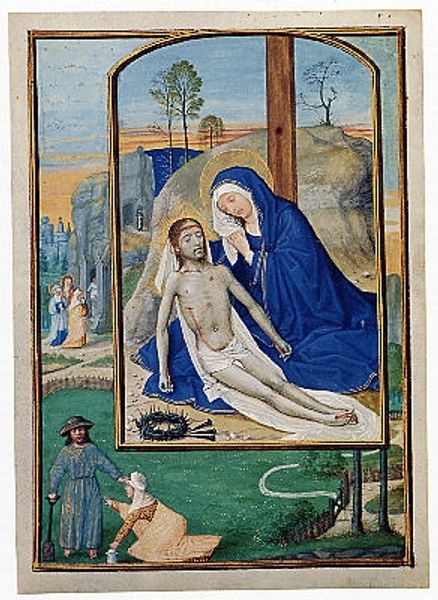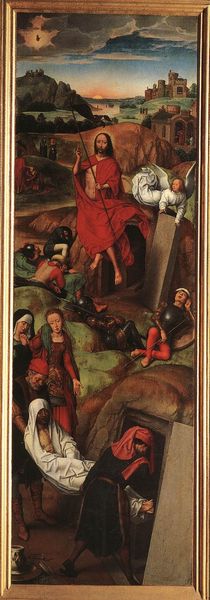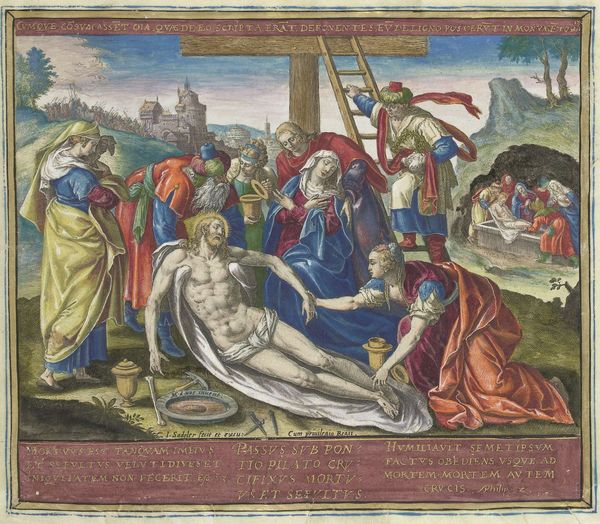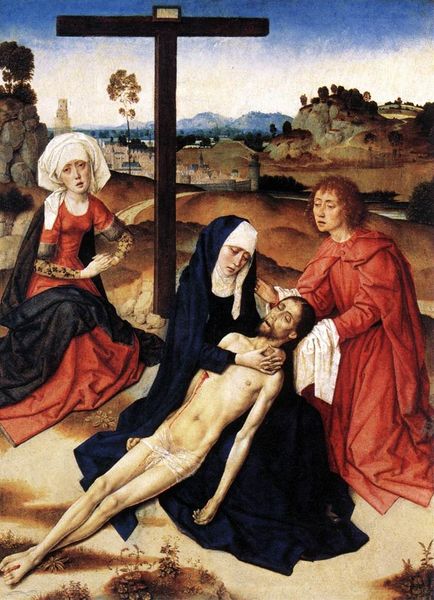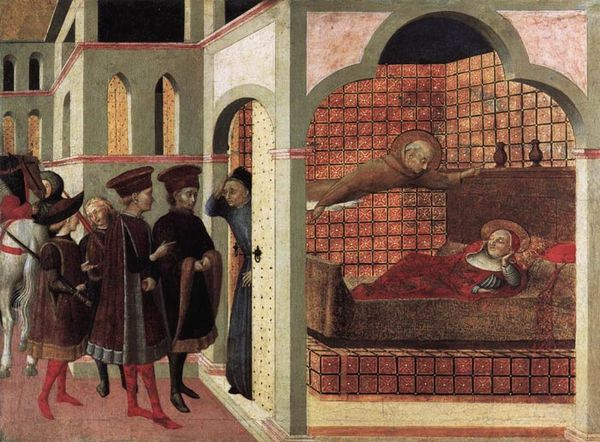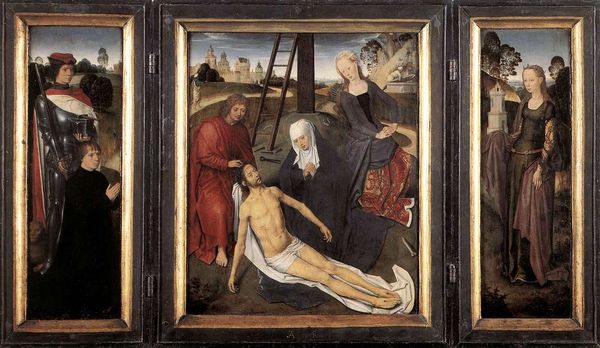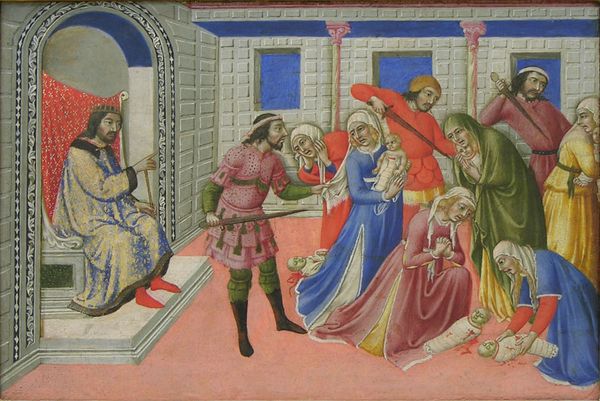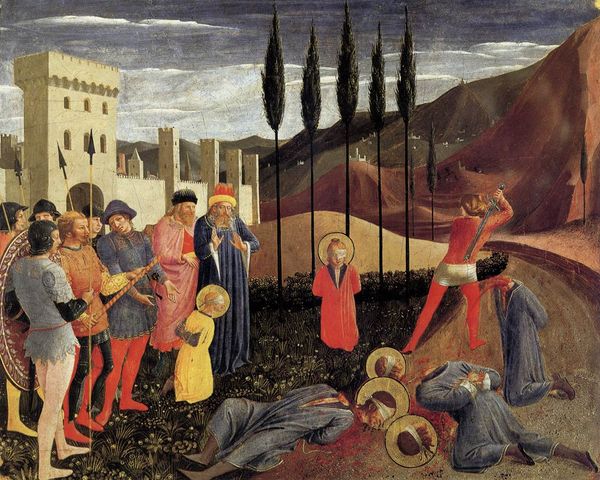
painting, oil-paint
#
portrait
#
medieval
#
narrative-art
#
painting
#
oil-paint
#
figuration
#
oil painting
#
watercolour illustration
#
history-painting
#
northern-renaissance
#
portrait art
#
fine art portrait
Copyright: Public domain
Jean Fouquet painted 'Job and his False Comforters' in France around the mid-fifteenth century, using tempera and gold leaf on parchment. The image shows the Book of Job, who loses everything, and is visited by three friends. The medieval period was a deeply religious one and a person's lot in life was considered to be a sign of divine favor, or disfavor. The comforters are dressed in rich robes that identify them as members of the court. Behind them is a large and prosperous castle, connoting Job's previous life of wealth. Job, nearly naked and covered in sores, lies on a dung heap outside the walls. The comforters can be seen to be literally looking down on Job, attributing his suffering to some moral failing. Fouquet uses the narrative to comment on the rigid hierarchies of wealth and class that were emerging in France at the time. Understanding the meaning of art is always tied to its social and institutional context. Careful research in primary sources such as religious texts, social histories, and even court documents, can help us understand how people like Fouquet were trying to make sense of their world.
Comments
No comments
Be the first to comment and join the conversation on the ultimate creative platform.
